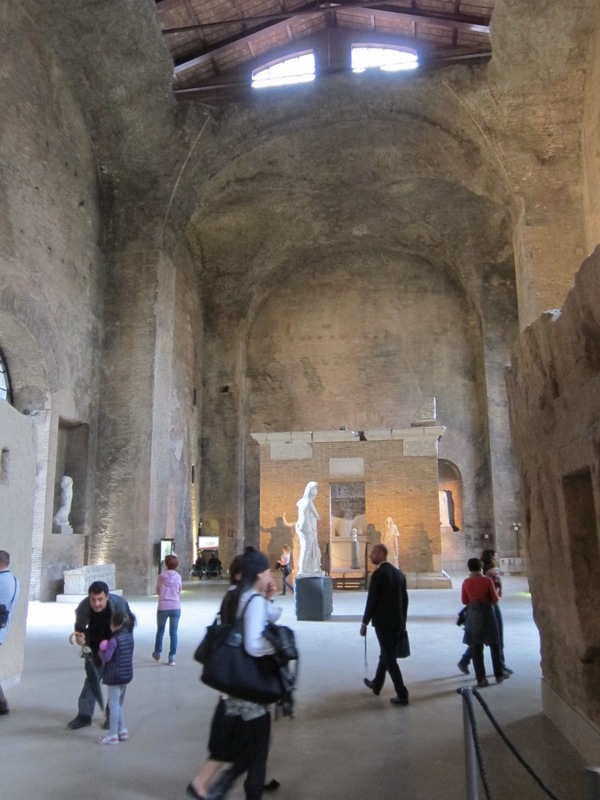Survival: Conversion and Modern Use
The Baths fell to a state of ruin after Goths destroyed the aqua Marcia in 537 CE. Processes of conversion into churches and museum space have saved the Baths from more disruptive appropriation. (Stories of ancient Roman monuments' survival via reuse or incorporation into churches are familiar: see the incorporation of the Arch for Septimius Severus into a church.)
Michelangelo orchestrated the conversion of the main bath rooms into the basic form they retain today. In 1561, Pope Pius IV appointed Carthusian monks as conservators of the remains of the Baths.1 Two years later, Michelangelo began designing the conversion the original block of bathing rooms into the Basilica de Santa Maria degli Angeli e dei Martiri.2 In this process, the Baths of Diocletian completed a phase of transition from a monument and facility - whose use value lay in sensory and social experience, and whose visual artistic value served to enhance daily experience - to a church where the purpose of visual aesthetic experience was, in theory, the enhancement of the experience of religious practice.
Subsequent work converted parts of the bathing complex into a Charterhouse for the monks, a cloister, and other spaces for religious or religiously affiliated activity. The National Roman Museum made the Baths of Diocletian its main seat at its inception in 1889, and is responsible for the conservation and tourism in large portions of the Baths today.
______
1. Soprintendenza Speciale per i Beni Archeologici di Roma, "National Roman Museum - Baths of Diocletian" http://archeoroma.beniculturali.it/en/museums/national-roman-museum-baths-diocletian (date visited: 21 December 2016).
2. Amanda Claridge, Rome (Oxford: Oxford University Press, 1998), 393.
